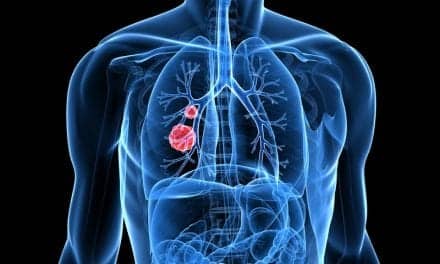Data published in the Journal of the National Cancer Institute demonstrated the potential for a noninvasive nasal test to help improve the safety and accuracy of lung cancer detection among current and former smokers, according to Veracyte Inc.
Boston University researchers sought to evaluate whether smoking produces field-of-injury genomic alterations in the cells lining human nasal passages. The investigators prospectively collected nasal epithelial cells from 505 current and former smokers undergoing diagnostic evaluation for pulmonary lesions in two, prospective multi-center clinical studies (AEGIS-1 and AEGIS-2).
After one year of follow up, researchers identified differentially expressed genes in the nasal epithelium of AEGIS-1 patients who were diagnosed with lung cancer vs. those with benign disease. They also confirmed significant consistency between the field-of-injury alterations found in paired samples of cells from the lower and upper airways (bronchial and nasal epithelial cells).
Finally, the researchers determined that a noninvasive nasal classifier comprising 30 of the most differentially expressed genes significantly enhanced the ability of a risk model based only on clinical factors (age, smoking status) to predict lung-cancer status.
“The data published today provide compelling evidence that molecular biomarkers used to determine lung cancer risk in cells from the bronchial airway could provide similar information as cells obtained from a simple nasal swab. This discovery could offer a method to further reduce the uncertainty, risk and cost associated with the early detection of lung cancer,” said Avrum Spira, MD, MSc, professor of medicine at Boston University School of Medicine and corresponding author on the JNCI paper. “This need is especially urgent given the growing number of lung-cancer screening programs in the United States.”
The new findings build on research previously conducted by Dr Spira and a team from Boston University, which demonstrated that cells in the central bronchial airways of the lung exhibit measurable cancer-associated gene-expression changes due to smoking. These collective genomic alterations comprise a “field of injury,” which serves as a biomarker distinguishing ever-smokers with lung cancer from those with benign lung disease, independent of clinical risk factors.
The field-of-injury innovation is the foundation for Veracyte’s Percepta Bronchial Genomic Classifier, which evaluates patient samples obtained by bronchoscopy to improve lung cancer screening and diagnosis.










